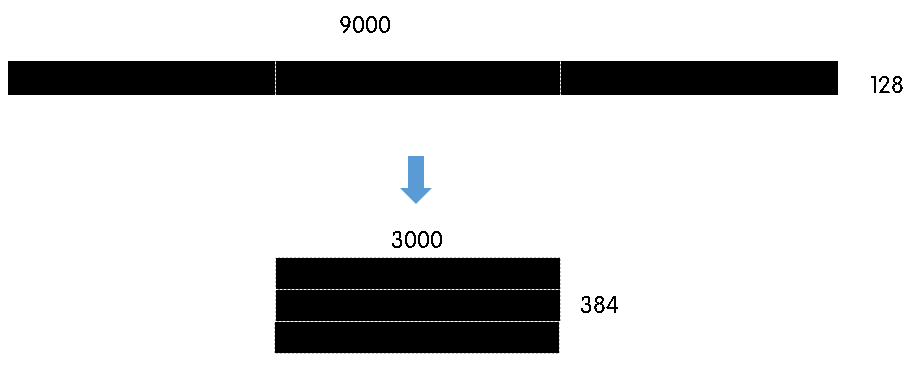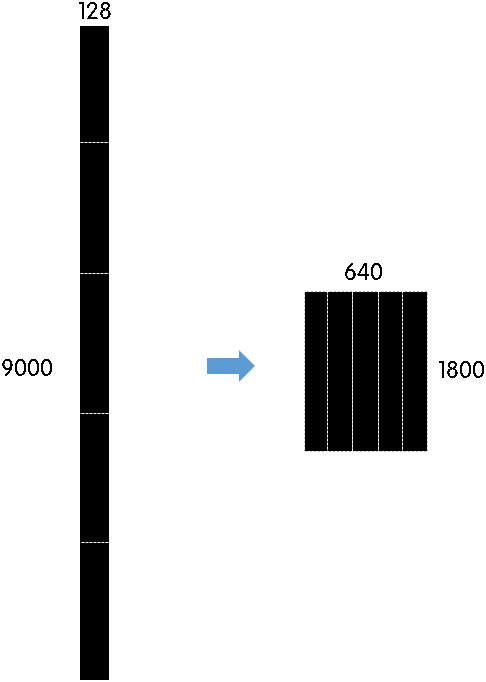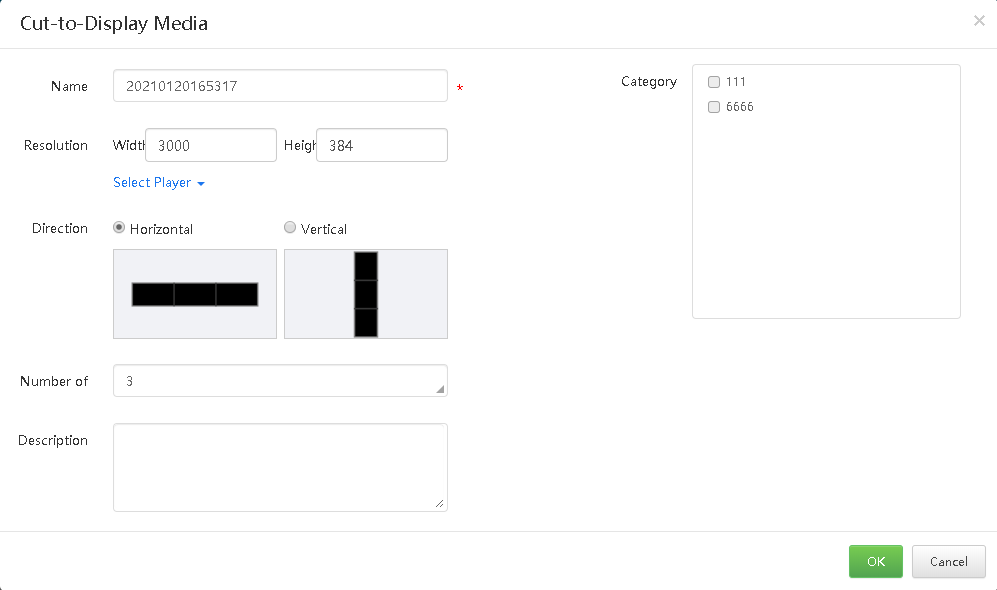When the pixel width (height) of the resolution of a screen is greater than the pixel width height of the maximum loading capacity of a multimedia player, but the screen resolution does not exceed the maximum loading capacity of the multimedia player, cut-to-display media can be used to enable solution playback on ultra-long screens.
When you create cut-to-display media, the resolution must be consistent with the configured screen width and height.
- When the cut-to-display media is played on an asynchronous terminal, the configured screen width and height cannot exceed the maximum width and height of the loading capacity of the Taurus series multimedia player.
- When the cut-to-display media is played on a synchronous terminal, the configured screen width and height cannot exceed the width and height of the computer screen resolution.
The resolution of a screen is 9000×128 or 128×9000 and the maximum loading capacity of a TB8 multimedia player is 2,300,000 pixels with a maximum width of 4096 pixels and a maximum height of 1920 pixels.
- Ultra-wide screen (9000×128)
-Number of parts: 9000/4096 = 2.20 (Here an integer is required, so the number of parts is 3.)
-Screen width to be configured: 9000/3 = 3000
-Screen height to be configured: 128 × 3 = 384

- Ultra-tall screen (128×9000)
-Number of parts: 9000/1920 = 4.69 (Here an integer is required, so the number of parts is 5.)
-Screen width to be configured: 128 × 5 = 640
-Screen height to be configured: 9000/5 = 1800

Step 1 Choose  > Media Management > Media.
> Media Management > Media.
Step 2 Click Add and select Cut-to-Display Media from the drop-down options.
Step 3 In the Cut-to-Display Media window, specify a name, resolution and the number of parts, then click OK.
- The resolution of the solution must be consistent with the configured screen resolution.
For the detailed calculation method, see the preceding Examples.
- Set the Direction as required. For an ultra-wide screen, select Horizontal, while for an ultra-tall screen, select Vertical.
- The number of parts is calculated according to the actual screen width and height and the configured screen width and height.
For the detailed calculation method, see the preceding Examples.

Step 4 On the editing page of cut-to-display media, as shown in Figure 4-6, add the required media items, edit their properties, and adjust the layout.
The editing area of cut-to-display media is displayed based on the actual screen size.

Step 5 After the editing, click Save.






